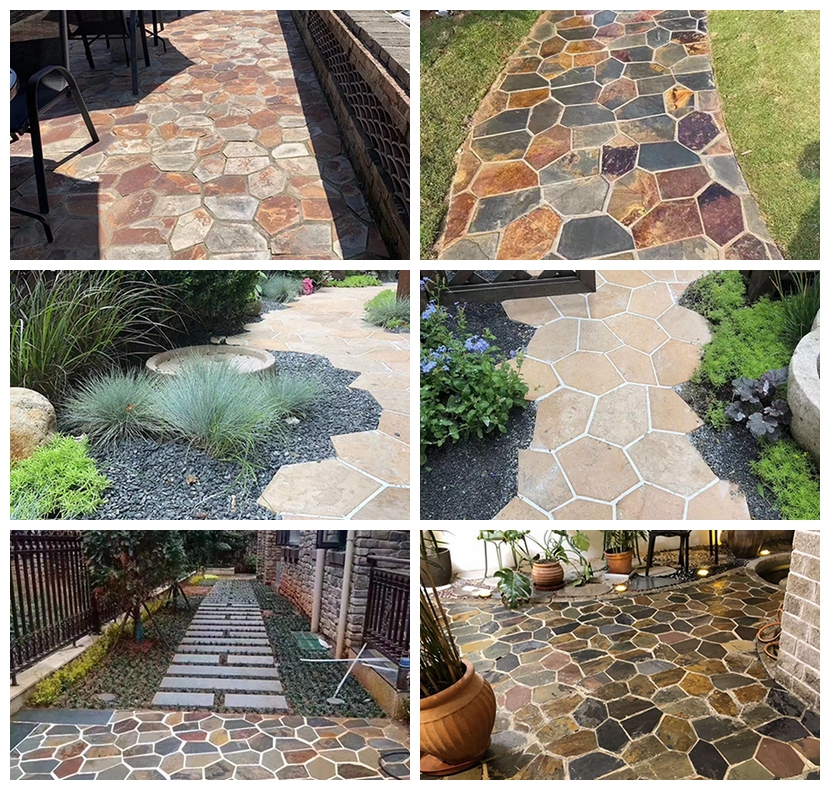|
Among various paving materials, granite has become the preferred choice for many architects and designers due to its unique aesthetic appeal and excellent durability.
Granite paving stones are not only naturally textured and hard but also have low maintenance costs, making them an ideal choice for achieving both aesthetic and practical outdoor environments.
This article will provide a detailed introduction to the advantages, types, installation methods, and maintenance techniques of granite paving stones, helping you gain a comprehensive understanding and make the right choice for granite paving stones.

The advantages of granite paving stones
1. Very high durability
Granite is a very hard rock, primarily composed of quartz and feldspar.
This natural stone ranks second only to diamond in hardness, thus exhibiting excellent wear resistance and pressure resistance.
Granite paving stones can withstand extreme weather conditions, are resistant to cracking due to temperature changes, and maintain stability even in cold or rainy environments.
2. Easy maintenance
Compared to other paving materials, granite is easier to maintain.
This material does not easily accumulate dirt on its surface, making cleaning very convenient.
Ordinary cleaning agents and water are sufficient to restore the original luster of granite.
Additionally, granite does not require frequent sealing treatments, and its low maintenance cost makes it an economical and practical choice for paving.
3. Unique natural beauty
Each granite slab is unique with varying colors and textures, bringing unparalleled natural beauty to your outdoor paving.
The colors of granite are typically gray, black, white, or pink, and their natural luster and patterns can significantly enhance the overall aesthetic appeal of outdoor spaces.
4. Environmentally sound
Granite is a completely natural material, free of harmful substances and completely recyclable.
The use of granite can not only reduce the burden on the ecological environment, but also improve the environmental beauty.
Types of granite paving stones
Granite paving stones are mainly divided into the following types:
-Granite brick: Commonly square or rectangular, uniform in size and thickness, suitable for places where regular patterns are required.
-Irregular granite slabs: retaining the natural edge, shape and size, suitable for creating a natural style landscape design.
-Granite gravel: Small pieces of granite that can be used to fill paths or as decorative elements.
Method of erection
The installation of granite paving stones requires professional equipment and technology, which usually includes the following steps:
1. Foundation preparation: Ensure that the laying area is flat and solid, and excavate and fill if necessary.
2. Sand bed: A layer of sand is laid on a stable base to adjust the level of the stone.
3. Stone laying: lay granite stone according to the design pattern one by one to ensure that each stone is evenly spaced.
4. Filling: Use sand or other filling materials to fill the gaps between stones and increase the stability of the paving.
5. Overall inspection and cleaning: After the laying is completed, check the overall effect and clean up the site.
Maintenance tips
In order to maintain the beauty of granite paving stones and extend their service life, it is recommended to carry out the following maintenance regularly:
-Clean: rinse regularly with water or use a soft brush to clean surface debris.
-Cleaning: When encountering stubborn stains, you can use the appropriate stone cleaner to deal with them.
-Check: check the condition of the filling material regularly and replenish it in time to prevent the growth of weeds.
Granite paving stones can bring lasting beauty and functionality to your outdoor space.
Whether it's an elegant garden path, a spacious square, or a family courtyard, choosing granite is the preferred material for enhancing the texture of the environment.
We hope this article helps you better understand the types, advantages, and installation and maintenance techniques of granite, enabling you to make informed choices that create a paving effect that is both naturally beautiful and durable for your space.
|